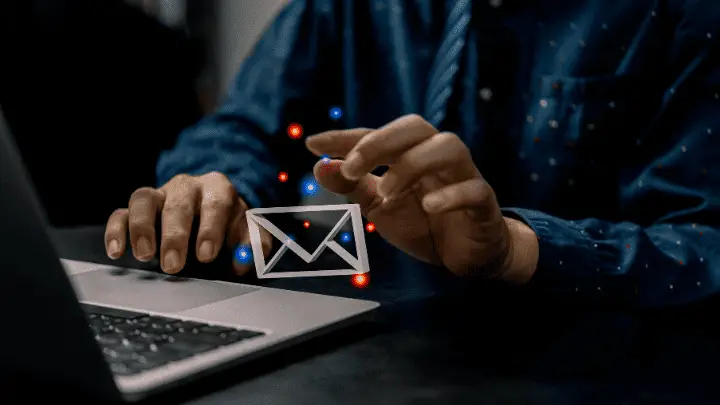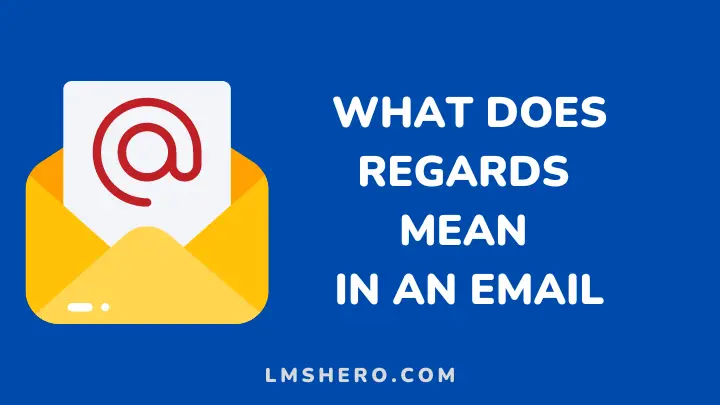Hey there! Have you ever received an email ending with “regards,” or do you want to know when to include it? It’s a common way to close an email, but have you ever wondered what it actually means?
Well, wonder no more! In this article, I will discuss the meaning behind “regards” and explore its various uses in email communication. Whatever stage of your career, understanding the subtleties of email etiquette can make a big difference in how others perceive you.
Let’s get started.
What does “regards” mean in an email?
When it comes to email communication, it’s easy to overlook the importance of proper etiquette. One small but significant aspect of this is including a closing remark such as “regards” in your message. But what does regards mean in an email?
It’s a polite way of expressing goodwill and respect towards the recipient. It’s acknowledging their time and effort spent reading and responding to your message. Omitting a closing remark can be abrupt or rude, especially in professional settings.
Using regards or a similar phrase such as “sincerely” or “best regards” shows that you value the relationship and your communication.
Understanding the different variations of “regards”
1. Best regards
“Best Regards” is a warm, professional closing that implies a genuine, well-wishing sentiment. It’s suitable for formal emails, especially when you want to maintain a positive tone without being overly casual.
2. Kind regards
“Kind regards” is another variation that adds a touch of friendliness to your closing. It’s often used professionally to maintain a cordial tone while expressing goodwill.
3. Warm regards
“Warm regards” indicates a higher level of warmth and sincerity in your closing. This is appropriate for emails where a more personal touch is desired.
When to use “regards” in an email?
Using “regards” in an email depends on the context and your relationship with the recipient. Here are some scenarios where it is fitting:
Formal correspondence: When communicating with colleagues, clients, or superiors, “Regards” is a safe choice that maintains professionalism.
Slightly familiar relationships: If you have a working relationship that’s slightly more relaxed, “Kind Regards” can strike a balance between formality and friendliness.
Known recipients: When emailing someone you know well, “warm Regards” can add a personal touch to your closing.
Why is email etiquette important?

Email etiquette refers to the set of guidelines that dictate the proper behavior when using emails. These guidelines are important because they help to ensure that emails are professional, effective, and respectful. Here are some reasons why email etiquette is important:
- First impressions: How you write an email can create a lasting impression on the recipient. Using proper email etiquette ensures that your email comes across as professional, respectful, and organized.
- Clarity: Proper email etiquette helps ensure your message is clear and easy to understand. This means using proper grammar, punctuation, and formatting.
- Efficiency: Using proper email etiquette can help streamline communication. By being clear and concise in your emails, you can avoid unnecessary back-and-forth messages and save time for you and the recipient.
- Respect: Email etiquette helps ensure your emails are respectful and considerate. This means using appropriate language and tone and avoiding sarcasm or rudeness.
- Professionalism: Proper email etiquette is essential in professional settings. It helps to maintain a professional image and builds trust with colleagues, clients, and business partners.
In conclusion, email etiquette is important because it helps to ensure that your emails are professional, effective, and respectful. Following email etiquette guidelines can create a positive impression, communicate, save time, show respect, and maintain professionalism.
So next time you’re drafting an email, take a moment to consider your closing remark and include regards to leaving a positive impression.
FAQs
Can you use “regards” in informal emails?
Yes, using “regards” in somewhat informal emails is perfectly fine. However, if you’re sending a more casual message, you might want to opt for a less formal closing.
Is “regards” suitable for business communication?
Yes. “Regards” is a great way to end a business email as it conveys a professional tone.
Are there any alternatives to “regards”?
If you’re looking for alternatives to “regards,” options are based on the desired tone. You could consider using phrases like “sincerely,” “yours,” or even “best wishes.”
Can you use “warm regards” in professional emails?
Yes, “warm regards” can be used in professional emails, especially when you want to add a touch of sincerity.
Should you always include a closing in your emails?
It’s always a good idea to include a closing like “regards” at the end of your email. It gives a nice sense of closure and helps set a friendly tone for your message.
How important is email etiquette in the business world?
Your email etiquette can speak volumes about your professionalism, attention to detail, and overall competence. So it’s worth taking the time to ensure your emails are well-crafted and considerate.
Conclusion
When using regards in emails, it’s important to remember that this closing phrase is often used in professional or formal communication. While politely ending an email is imperative, you should consider the context and relationship with the recipient.
If you email a colleague or business partner, “regards” may be appropriate. However, if you’re emailing a friend or family member, it may come across as too formal.
If you’re unsure about the appropriate closing phrase, it’s always better to err on caution and choose a more neutral option, such as “best” or “sincerely.”
Ultimately, ensuring your email is respectful, clear, and effective is most important. Whether you choose to use regards or another closing phrase, make sure it aligns with the tone and purpose of your message.
You can also learn more about what a letterhead means.
Thanks for reading.






